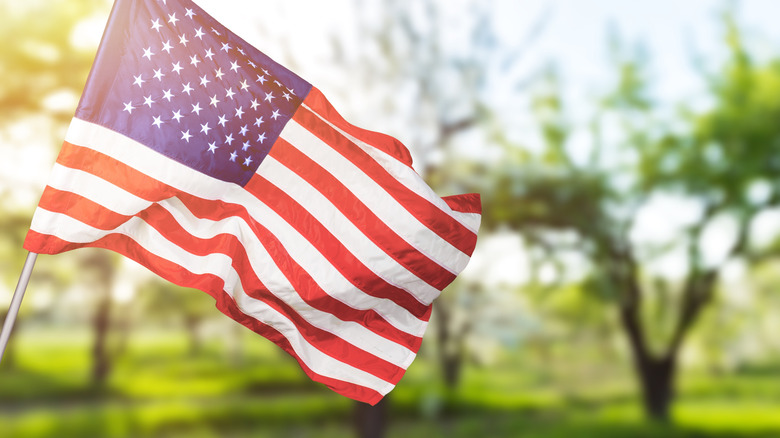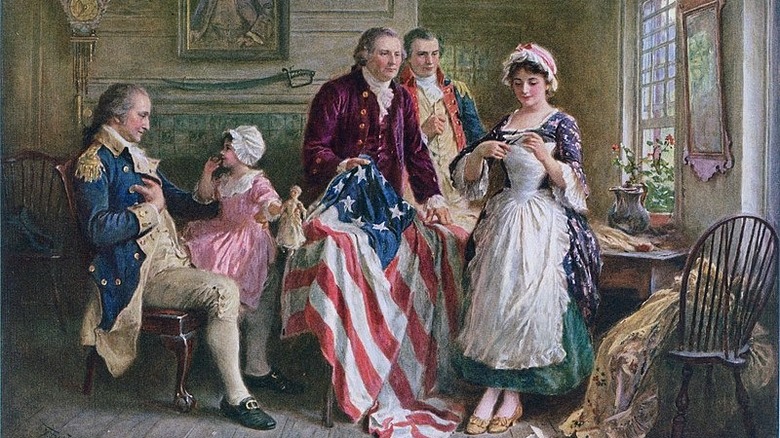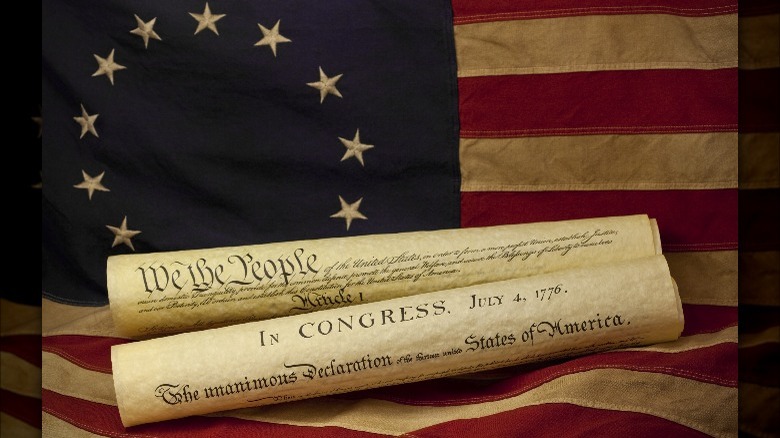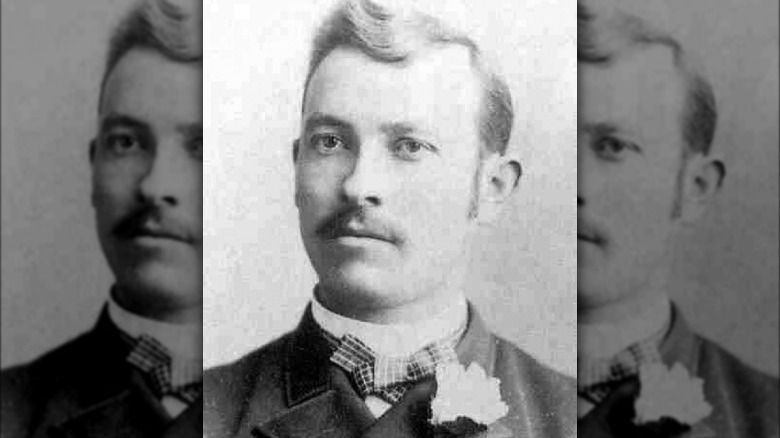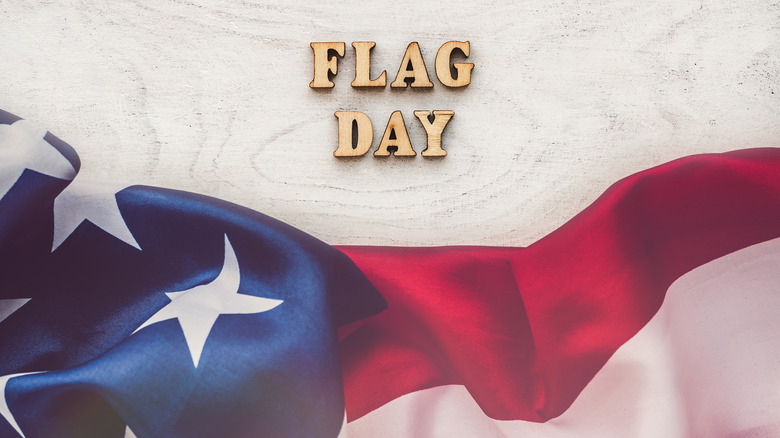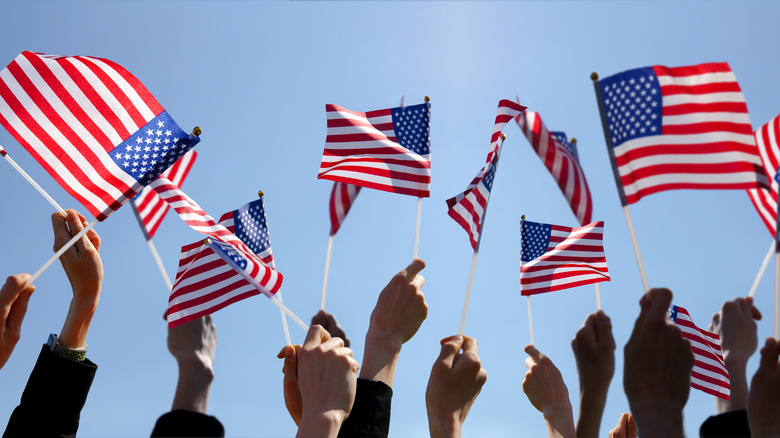The Origins Of Flag Day Explained
The Fourth of July, Memorial Day, and Labor Day are holidays that a lot of people look forward to during the summer season, but there is another celebration that some may overlook. Flag Day is celebrated every June 14, and it's an observance of the time when the Continental Colors were adopted as the first official American flag. Flag Day isn't an official federal holiday, but New York and Pennsylvania observe it as a state holiday, per Britannica.
On Flag Day, people are encouraged to display the United States flag in front of their homes and establishments. Per Military, parades, ceremonies, competitions, and other group activities are also held in different jurisdictions in remembrance of the first Flag Day. The American flag has undergone more than two dozen changes since its inception, and there are some myths about it that a lot of people believe to be true. Here is the origin of the American flag and some interesting facts about Flag Day.
Did Betsy Ross really create the first flag?
Many believe that seamstress Betsy Ross was the woman who made the first American flag. As the story goes, George Washington paid a visit to Ross in Philadelphia and asked her to create a flag based on a design he brought, but the seamstress was allegedly responsible for the final look of the flag (via History). This story, however, was only revealed in 1870 when her grandson, William J. Canby, told the story to the Historical Society of Pennsylvania. His account made it to newspapers, and many accepted it as fact.
According to National Geographic, however, historians have never found any evidence throughout history that supports Canby's story. At that time, George Washington was a general who was busy with the army, and he had little time to travel to Ross' shop in Philadelphia. As noted by Peter Ansoff of the North American Vexillological Association, there is no credible basis for Canby's story, and there is most likely no way to determine who created the first American flag.
The first American flag
Today, the American flag is a symbol of patriotism. When it was first created, however, its purpose was much different. As reported by the American Association of Retired Persons, the flag was used to identify naval ships. The first flag — called the Grand Union Flag — was used in 1776 by the Continental Army Forces. It consisted of the Union Jack and 13 stripes to signify the 13 colonies that were fighting under the British.
It was on June 14, 1877, when the Continental Congress approved the first official flag called the Stars and Stripes. The resolution, as noted by the National Park Service, stated, "Resolved, that the flag of the United States be thirteen stripes, alternate red and white; the union be thirteen stars, white in a blue field representing a new constellation." There were no other statements on how the stars should be arranged nor how many points they should have, and various interpretations of the Stars and Stripes were used.
The Father of Flag Day
Bernard J. Cigrand is considered the Father of Flag Day. He worked as a teacher in Waubeka, Wisconsin, and in 1885, he asked his students to write an essay about what the American flag meant to them, as reported by National Geographic. Cigrand advocated for the creation of a holiday in observance of June 14, when the first American flag was approved by the Continental Congress. Cigrand worked toward his goal and even wrote an article titled "The Fourteenth of June" for a newspaper in 1886.
In 1888, Cigrand became the editor-in-chief of the American Standard, the official newspaper of the Sons of America, which is an organization dedicated to the preservation of the American flag and patriotism, as noted by the Postal Museum. With his position, Cigrand was able to advocate further for the creation of Flag Day, and even gave more than 2,000 speeches regarding the subject. His efforts were recognized, and in the years following, some local governments recognized June 14 as Flag Day, but it wasn't officially established as a holiday until later.
The official proclamation of Flag Day
A few states had already celebrated Flag Day for years before President Woodrow Wilson issued a proclamation on May 30, 1916, asking for June 14 to be observed as Flag Day. In his proclamation, Wilson urged people all over the country to celebrate Flag Day through patriotic activities. According to the U.S. Department of Veterans Affairs, however, it wasn't until August 3, 1949, that President Harry Truman signed Flag Day into law.
To date, per USA Today, there have been 27 versions of the American flag. More stars were added to signify the new states. The current version of the flag — with 50 stars — was first flown in 1960 when Hawaii officially became a state of America, and it is the longest-used flag to date. Since Flag Day is not a federal holiday, most do not get to have a free day away from school or work, save for Pennsylvania and New York where Flag Day is a state holiday.
Flag Day celebrations
Americans celebrate Flag Day in numerous ways. Most fly flags outside their home, wear the flag's colors, and participate in local events. There are also organizations dedicated to the holiday, such as the National Flag Day Foundation, which holds various activities including parades, essay contests for children, festivals, and fireworks displays. Schools and veterans groups also sponsor events and activities in order to preserve the traditions associated with the American flag.
The United States Flag Code lists the proper way to display a flag and the instances when it can be displayed (via American Legion). However, though the Flag Code is written as a law, there are no penalties associated with those who don't comply with the code, as noted by WUSA 9. Despite this, however, people who want to show their patriotism by displaying the flag are urged to follow the proper flag etiquette as a sign of respect.
